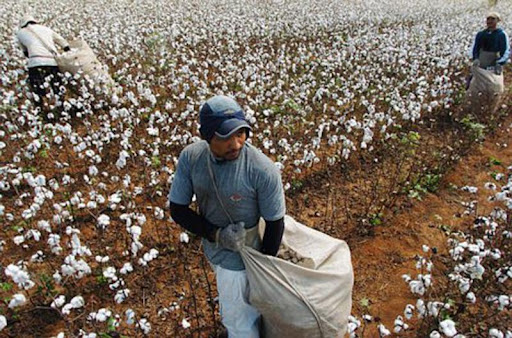Wednesday, January 26, 2011
Record yields for some, devastation for others
 2011 was meant to be the jackpot year. It was the year when debts could finally be repaid and equipment upgraded.
2011 was meant to be the jackpot year. It was the year when debts could finally be repaid and equipment upgraded.
After a decade of drought, everyone agreed that farmers deserved to take home a good pay packet to make up for the disastrously dry years.
For Australian cotton farmers, this year couldn't have looked better.
International cotton prices were at an all-time high.
The industry was expecting a record four million bales to be produced. And water was in abundant supply.
With the weather system changing from dry El Nino to water-loving La Nina, everyone knew that it would be a wet year.
But very few predicted the water to arrive like it did.
Queensland Cotton Growers
From the beginning of December to early January, growers in southern Queensland and northern New South Wales received well above its average rainfall.
Where John Cameron lives, just outside of Dalby in Queensland's south, their annual rainfall was received in just six weeks.
The crops, barely developed, were twice inundated for days on end.
The water has stunted their growth, and while they're still leafy and green, there is little chance they will produce many buds.
It's an emotionally trying time for growers who have forward sold their crop to merchants.
John Cameron says that at the moment he's trying not to think about the money he will have to pay back, and instead focus on trying to get the crops producing something.
"It's certainly something that you try not to discuss with your wife for fear that it may get a little heated," he says.
"At the moment it's a dollars and cents game between our merchants and our bankers, and those discussions are probably yet to be had."
Affected growers now need to make a decision whether it is worth attempting to salvage damaged shrubs.
Johannes Rogan had about one third of his crop badly inundated.
"In a year like this one where the profit margins are going to be very much cut in to, it becomes very much a money managing issue," he says.
"We have to be very careful in how much money we spend on something that doesn't give us a certain outcome in the end."
NSW Cotton Growers
Further south, in the cotton growing region of Goondiwindi and Boggabilla, growers are still trying to count the cost of what they have lost.
Floodwaters came over many properties, despite the best efforts of farmers to build levees to protect their crops.
Fred Ghirardello's cotton property is just south of Goondiwindi on the New South Wales' side of the border.
Many of his paddocks were inundated, and some of the crops were destroyed.
"We'll take a hit, it will definitely be penalised," he says.
"We're just looking at the overall field, we're ignoring some of this tail-drain cotton, and basically we believe that the bulk of the field will be still salvageable."
But he says that he was not as badly affected as other growers in the region.
"We were probably luckier than most, we've only had a couple of fields which have been affected, so we're very fortunate.
"If we get two weeks of sunshine and warm weather, good nights, we'll keep managing it as hard as we possibly can, but we don't expect a full recovery."
The industry's future
According to the peak body representing growers, Cotton Australia, overall production should only fall by 10 per cent.
In the context of a record year, that decline isn't very significant, and the final yield is still going to come close to four million bales.
However, the losses aren't spread out across the board. While many growers have no impact and should make a good profit, some have lost their entire crop.
Andrew Watson is Cotton Australia's chairman, and he is meeting with merchants to ask them to consider spreading out flood-affected farmers' debt over a number of years.
"A cotton contract is a written contract, signed contract, that growers must abide by and is a contract in law," he said.
"However, we're just looking for innovative solutions to manage the immense financial pressure in this current year, so that growers are able to continue farming and not be put out of business."
(Source: http://www.abc.net.au/rural/content/2011/s3122398.htm?site=southqld)

This post was written by: HaMienHoang (admin)
Click on PayPal buttons below to donate money to HaMienHoang:
Follow HaMienHoang on Twitter












0 Responses to “Record yields for some, devastation for others”
Post a Comment